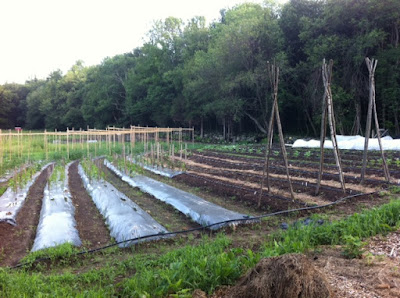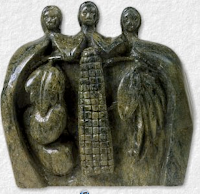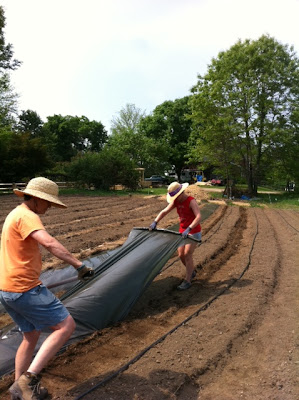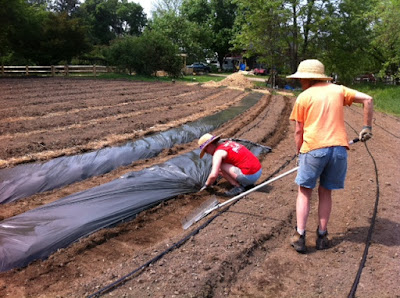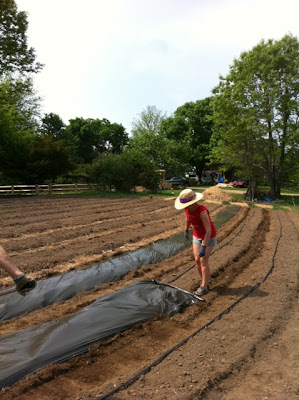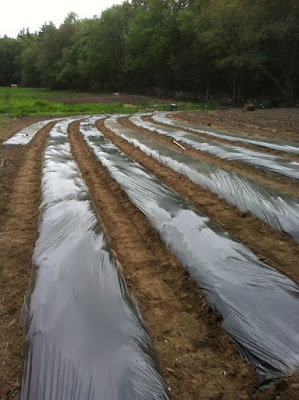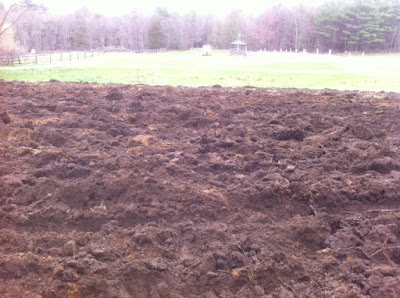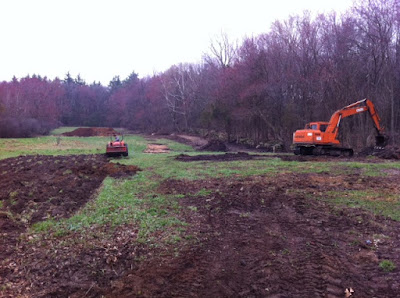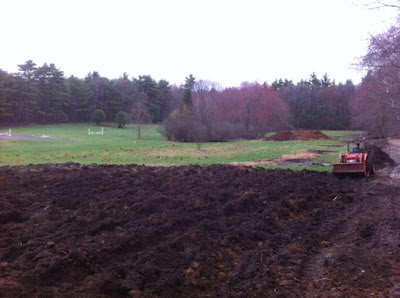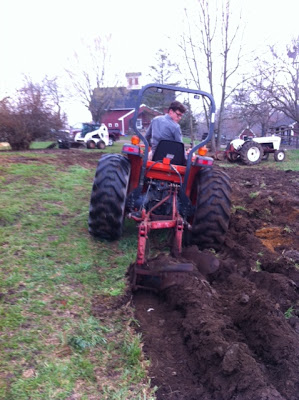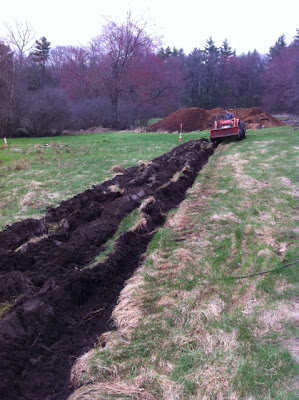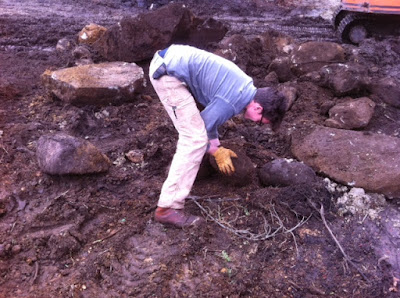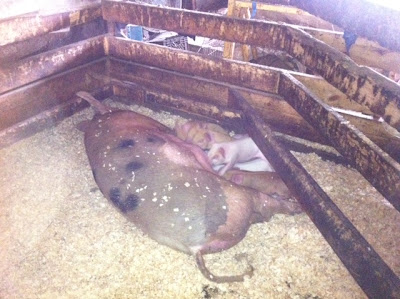Dave and I finally got around to planting something in the far field today. Even though we wake up at the crack of dawn, it never seems like the days are long enough.
We wanted to try growing a little bit of corn this year, just to see how it goes. In my permaculture (permaculture: a system of cultivation intended to maintain permanent agriculture or horticulture by relying on renewable resources and a self-sustaining ecosystem) book I’ve been reading about creating poly cultures, or in other words, companion planting. The idea is that instead of maintaining classically straight and monotonous rows of one kind of plant, you mix vegetables together that are mutually beneficial. One of the most famous guilds (plant combinations) is the Native American “three sisters”: corn, beans and squash. The corn creates a trellis for the beans, the beans fix nitrogen in the soil and improve it, and the squash covers the ground and inhibits weeds. Together, these three plants create a better product, using less space and requiring less effort.
The Legend:
?nce upon a time very long ago, there were three sisters who lived together in a field. These sisters were quite different from one another in their size and also in their way of dressing. One of the three was a little sister, so young that she could only crawl at first, and she was dressed in green. The second of the three wore a frock of bright yellow, and she had a way of running off by herself when the sun shone and the soft wind blew in her face. The third was the eldest sister, standing always very straight and tall above the other sisters and trying to guard them. She wore a pale green shawl, and she had long, yellow hair that tossed about her head in the breezes.
There was only one way in which the three sisters were alike. They loved one another very dearly, and they were never separated. They were sure that they would not be able to live apart.
After awhile a stranger came to the field of the three sisters, a little Indian boy. He was as straight as an arrow and as fearless as the eagle that circled the sky above his head. He knew the way of talking to the birds and the small brothers of the earth, the shrew, the chipmunk, and the young foxes. And the three sisters, the one who was just able to crawl, the one in the yellow frock, and the one with the flowing hair, were very much interested in the little Indian boy. They watched him fit his arrow in his bow, saw him carve a bowl with his stone knife, and wondered where he went at night.
Late in the summer of the first coming of the Indian boy to their field, one of the three sisters disappeared. This was the youngest sister in green, the sister who could only creep. She was scarcely able to stand alone in the field unless she had a stick to which she clung. Her sisters mourned for her until the fall, but she did not return.
Once more the Indian boy came to the field of the three sisters. He came to gather reeds at the edge of a stream nearby to make arrow shafts. The two sisters who were left watched him and gazed with wonder at the prints of his moccasins in the earth that marked his trail.
That night the second of the sisters left, the one who was dressed in yellow and who always wanted to run away. She left no mark of her going, but it may have been that she set her feet in the moccasin tracks of the little Indian boy.
Now there was but one of the sisters left. Tall and straight she stood in the field not once bowing her head with sorrow, but it seemed to her that she could not live there alone. The days grew shorter and the nights were colder. Her green shawl faded and grew thin and old. Her hair, once long and golden, was tangled by the wind. Day and night she sighed for her sisters to return to her, but they did not hear her. Her voice when she tried to call to them was low and plaintive like the wind.
But one day when it was the season of the harvest, the little Indian boy heard the crying of the third sister who had been left to mourn there in the field. He felt sorry for her, and he took her in his arms and carried her to the lodge of his father and mother. Oh what a surprise awaited here there! Her two lost sisters were there in the lodge of the little Indian boy, safe and very glad to see her. They had been curious about the Indian boy, and they had gone home with him to see how and where he lived. They had liked his warm cave so well that they had decided now that winter was coming on to stay with him. And they were doing all they could to be useful.
The little sister in green, now quite grown up, was helping to keep the dinner pot full. The sister in yellow sat on the shelf drying herself, for she planned to fill the dinner pot later. The third sister joined them, ready to grind meal for the Indian boy. And the three were never separated again.
Every child of today knows these sisters and needs them just as much as the little Indian boy did. For the little sister in green is the bean. Her sister in yellow is the squash, and the elder sister with long flowing hair of yellow and the green shawl is the corn.
–A Mohawk legendFirst, Dave and I marked off a 20 by 25 foot space in the second field, and then divided it into six 20 foot rows with stakes and string.
Then, we marked the string every 5 feet to signal where to center our mounds. Mounding the soil is the traditional way to plant the three sisters, at least in this climate and soil, because it allows for better drainage. We staggered the spacing in adjacent rows. Before shaping the mounds, we dug a little hole and buried fish carcasses from my mom’s freezer (you may remember from American History class that this was another Native American trick). Then, a scoop of compost on top of that, and then, finally, we raked the mounds.
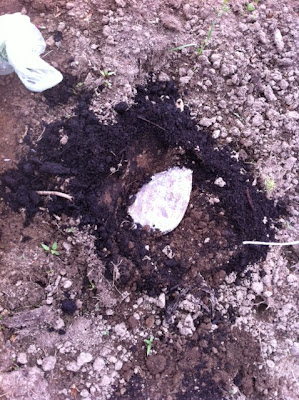 |
| That’s a flounder, in case you can’t tell. |
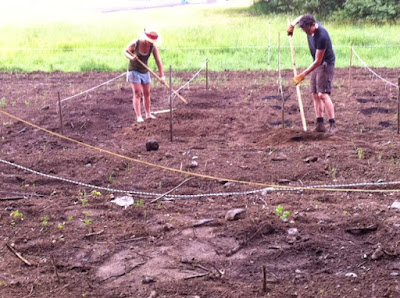 |
| Dave is 1/32 Cherokee, in case you can’t tell |
 |
The Final Product!
It’s hard to take good picture of dirt. |
In each mound we planted four corn seeds, 6 inches apart. The got a couple nice, soft summer rains this afternoon so hopefully they’re off to a good start. We’ll wait to plant the beans and squash until the corn is a little bit bigger, so the fast growing vines don’t overwhelm the little seedling.

